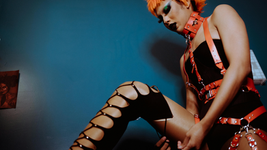"Mary Queen of Scots" is Engaging but Not Without Flaws
- Hannah Clayton
- Feb 6, 2019
- 2 min read
The premise of Mary Queen of Scots promises political intrigue with a zeitgeist-y inflection of girl power. It is unsurprising, therefore, that it was tipped as an Academy Award contender last year. The film follow the ups and downs of Anglo-Scottish relations in the Elizabethan period and the personal lives of the both country's monarchs. The relationship between Elizabeth I and the titular Mary, Queen of Scots is the most interesting part of the film, and the leads Saoirse Ronan (Mary) and Margot Robbie (Elizabeth) both put in great performances. Ronan particularly succeeds in the difficult task of tempering ambition with warmth, and an unlikely level of social tolerance for the sixteenth century, in a compelling and believable way. In parts, though, the handling of the central relationship between the two queens could be subtler – I lost count of the number of times the two queens were referred to as ‘sisters’. The clumsiness of the imagery used to define this sisterhood is exemplified in Rourke’s use of sheets to separate Mary and Elizabeth during the climactic scene where they finally meet. After the fifth sheet was swept away and they still had not seen each other, it gets tiresome instead of tense.

Image: Allociné.fr
This is not to say that Mary Queen of Scots is not well directed. Formerly a theatre director, Rourke seems to enjoy her new medium, making use of the freedom to employ sweeping wide shots of the Scottish countryside as well as close ups of her talented cast. The visual language of the film is colourful, but for me its neatness in places took me out of the otherwise gritty action. I applaud the inclusion of a menstruation scene but was bemused by the choreographed beauty with which the blood dripped into a bowl of water. The exception to this is the impressive hair and make-up design that renders Elizabeth’s pox-scarred face and successfully humanises such a distant historical icon.
The film thrives most in its performances. In addition to the two female leads, there is a stellar (mostly male) supporting cast, sporting an even more stellar set of beards: some tailored, some not so tailored. Particular praise, I think, should be paid to David Tennant as John Knox, who energises the film at various intervals by popping up to give venomously misogynistic sermons against Mary. Likewise, Jack Lowden is superb as Lord Darnley, who transforms from Mary’s charming suitor, to her emasculated drunkard of a husband. Rourke’s use of racially blind casting should also be celebrated – hopefully this is a trend that will continue to grow going forward.
Mary Queen of Scots is in places heavy-handed with its themes, and cliché in its approach to the period drama genre. However, its semi-complex portrayal of two leaders are compellingly brought to life by a talented cast. It is probably worth the ticket price purely to see Tennant spit out the word ‘harlot!’ with Brian Blessed levels of intensity.

Image: Allociné.fr
Edited by Eloïse Wright, Head Film Editor
Mary Queen of Scots is in cinemas until Tuesday 12th February.
Ticket prices vary: Cineworld: £11.30, ODEON: £9.25.

































